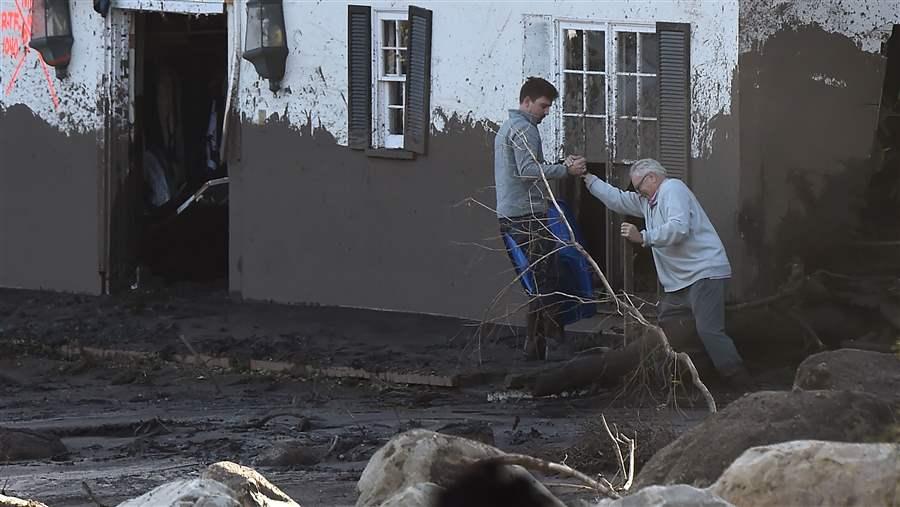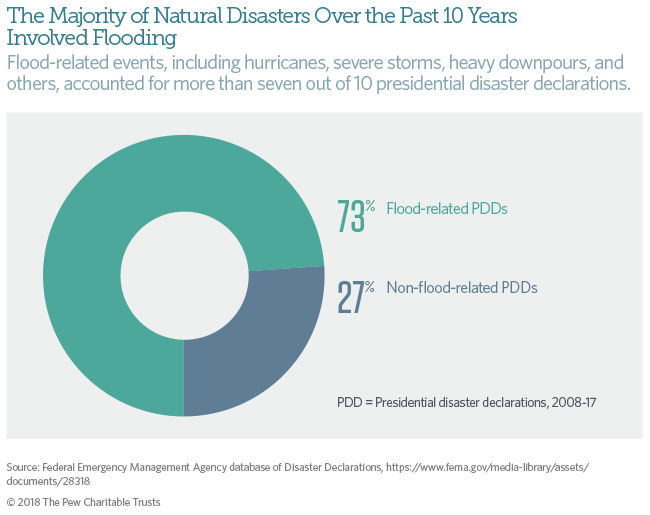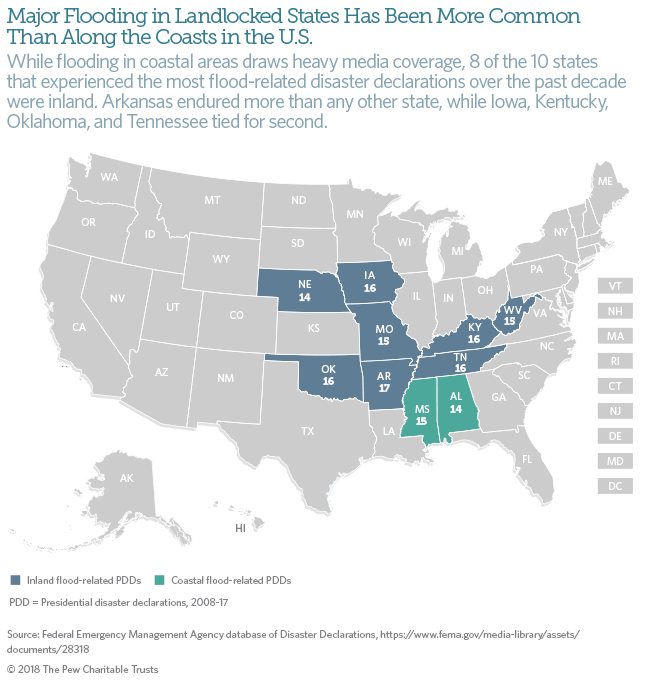Where It Rains, It Floods
Nationwide Disasters Underscore Need for Flood Policy Overhaul

An older man is helped as he tries to enter his mud-damaged home, Jan. 10, 2018, in Montecito, California. The federal government has amended the disaster assistance declaration it issued after the December wildfires in California to include the more recent damage from wildfire-induced flooding.
© Robyn Beck/AFP/GettyLast year tied the record for the most billion-dollar natural disasters in the U.S. While no one knows what extreme weather will bring in 2018, Americans across the country should be ready for flooding, based on the frequency and magnitude of such events over the past decade. A look at the Federal Emergency Management Agency database of Disaster Declarations over that span reveals two particularly telling themes:
Flooding is our nation’s most common natural disaster.
Major flooding in landlocked states has been more common than along the coasts.
These facts should serve as a reminder to our elected officials that no community is immune to flooding and its costly impacts. As Congress grapples with modernizing how the nation adapts to—and prepares and pays for—natural disasters, here are three reforms that could help localities better prepare for flooding and minimize the costs of recovery.
- Federal flood insurance. The National Flood Insurance Program (NFIP) provides federally backed coverage for homeowners and small businesses in more than 22,000 communities across the country. The program, established in 1968 to offset a lack of private sector flood insurance and help reduce federal spending on disaster response and rebuilding, is now nearly $14 billion in debt. In November 2017, the House of Representatives passed legislation that included measures to help reduce that debt and give the NFIP a more sustainable future. When the Senate takes up the issue, it should include provisions to ensure investment in mitigation and enable officials in flood-prone areas to reduce risk before disasters strike.
- Disaster mitigation. The federal government offers aid to states, localities, and individuals when disasters overwhelm local capacity. Research shows that federal mitigation grants save $6 for every $1 spent, yet current policies underinvest in pre-disaster planning. America needs policies that increase investments in hazard planning and mitigation to help states and municipalities prepare for and avoid the worst impacts of extreme weather events, and to stem the rising costs of flood disasters.
- Infrastructure. Investments in infrastructure are high on the national agenda in 2018. Flooding often damages essential facilities and services, such as roadways, electrical power plants, water treatment and storage facilities, and hospitals. To help break the costly cycle of loss and repair in flood-prone areas, Congress and the Trump administration should pass policies that require consideration of current and future flood risks for federal investment in construction or reconstruction.
Laura Lightbody directs The Pew Charitable Trusts’ flood-prepared communities initiative. Forbes Tompkins is an officer with the team.











